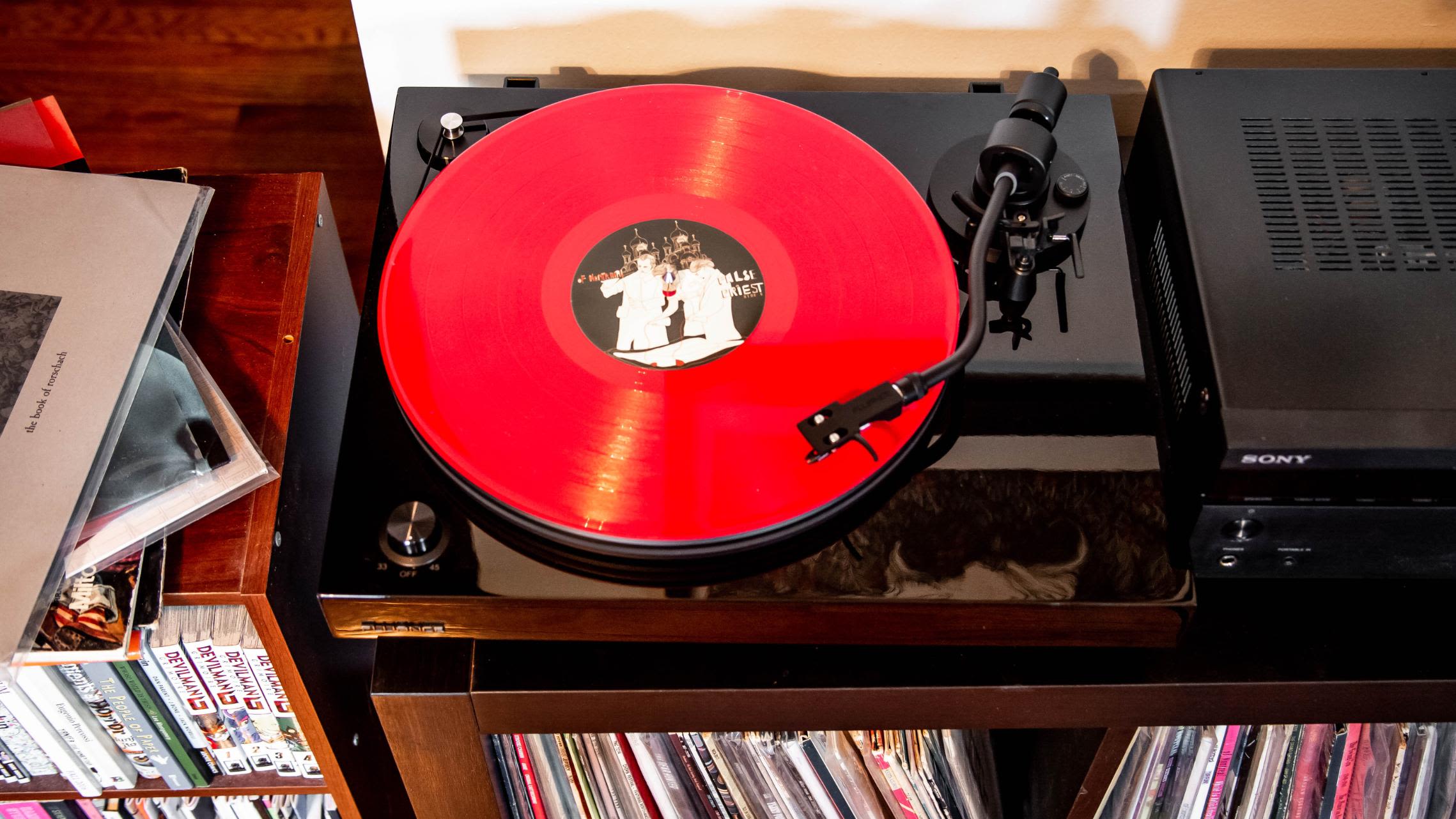Home>Devices & Equipment>Radio>What Is The Difference Between FM And AM Radio


Radio
What Is The Difference Between FM And AM Radio
Modified: January 22, 2024
Discover the key dissimilarities between FM and AM radio and enhance your understanding of the radio technology. Explore the contrast between these two popular radio transmission methods.
(Many of the links in this article redirect to a specific reviewed product. Your purchase of these products through affiliate links helps to generate commission for AudioLover.com, at no extra cost. Learn more)
Table of Contents
Introduction
Radio has been a popular medium of communication and entertainment since its invention. With advancements in technology, we now have two main types of radio broadcasting: FM and AM. These acronyms stand for Frequency Modulation and Amplitude Modulation, respectively. While both FM and AM radio serve the same purpose of transmitting audio signals through electromagnetic waves, there are key differences between these two types of radio.
In this article, we will explore the differences between FM and AM radio, delving into their frequency range, signal quality, noise and interference, transmission distance, as well as their uses and applications. By understanding these distinctions, we can gain a deeper appreciation for the unique features and functionalities of each radio type.
Before we dive into the details, it’s essential to understand the fundamental principle behind radio broadcasting. Both FM and AM radio work on the principle of modulation, where an audio signal is transformed into electromagnetic waves for transmission.
FM radio modulates the frequency of the carrier wave to transmit audio signals. On the other hand, AM radio modulates the amplitude of the carrier wave to convey the audio information. These different modulation techniques result in distinct characteristics of FM and AM radio.
Definition of FM and AM Radio
FM, which stands for Frequency Modulation, is a method of transmitting audio signals through varying the frequency of the carrier wave. As the name suggests, FM radio modifies the frequency of the carrier wave in relation to the audio signal. This modulation technique allows for a wide range of frequencies and delivers high-quality sound. FM radio is commonly used for music and entertainment broadcasts. Its higher frequency range allocates more bandwidth, resulting in greater fidelity and a better overall listening experience.
AM, on the other hand, stands for Amplitude Modulation. AM radio transmits audio signals by varying the amplitude (strength) of the carrier wave. Unlike FM radio, AM radio has a narrower frequency range, limiting the available bandwidth. It is primarily used for talk radio, news broadcasts, and other types of information dissemination. AM radio can be susceptible to noise and interference, which may affect the overall sound quality.
In summary, FM radio modulates the frequency of the carrier wave, providing a wider bandwidth and higher fidelity sound, making it ideal for music and entertainment. AM radio modulates the amplitude of the carrier wave, resulting in a narrower bandwidth and is commonly used for talk and information-based broadcasts.
Frequency Range
The frequency range is a critical factor that distinguishes FM and AM radio. FM radio operates within a higher frequency range compared to AM radio. FM radio typically ranges from 88 MHz to 108 MHz, while AM radio operates in the frequency range of 535 kHz to 1,700 kHz (or 535 to 1,700 AM).
The wider frequency range of FM radio allows for more available frequencies, enabling broadcasters to transmit multiple channels and providing listeners with a broader selection of stations to choose from. This greater frequency bandwidth of FM radio contributes to its ability to deliver clearer and more detailed sound quality, especially for music broadcasts.
On the other hand, the narrower frequency range of AM radio limits the number of available frequencies and, as a result, the number of stations that can be broadcasted. However, this narrower range also gives AM radio a stronger penetration capability through obstacles like buildings and hills, making it more suitable for long-distance broadcasts.
In summary, the frequency range of FM radio spans from 88 MHz to 108 MHz, offering a wide bandwidth for high-quality sound and multiple channel options. AM radio, on the other hand, operates within the range of 535 kHz to 1,700 kHz, with a narrower bandwidth but with better penetration capability for long-distance transmissions.
Signal Quality
Signal quality is an important consideration when comparing FM and AM radio. Due to their different modulation techniques, FM and AM radio offer distinct signal characteristics.
FM radio, with its frequency modulation, provides a higher signal quality compared to AM radio. The frequency modulation technique used in FM radio allows for a greater range of audio frequencies to be transmitted, resulting in a wider dynamic range and clearer sound quality. FM radio is capable of delivering high fidelity audio, making it well suited for music broadcasts. The signal strength of FM radio remains consistent over a larger coverage area, resulting in a more stable and reliable reception.
AM radio, on the other hand, is more susceptible to interference and noise. The amplitude modulation technique used in AM radio makes it vulnerable to various atmospheric and electromagnetic disturbances. These disturbances can cause static, fading, and other factors that impact signal quality, particularly during long-distance transmissions. However, AM radio can still provide intelligible sound, and its simplicity and robustness make it suitable for talk radio and news broadcasts.
In summary, FM radio generally offers a higher signal quality compared to AM radio. The frequency modulation utilized by FM radio enables a wider dynamic range and clearer audio, making it ideal for music broadcasts. AM radio, while more vulnerable to interference and noise, provides satisfactory sound for talk-based programs and news broadcasts.
Noise and Interference
Noise and interference are common challenges in radio broadcasting, affecting the clarity and quality of the signal. FM and AM radio differ in their susceptibility to noise and interference due to their modulation techniques.
FM radio is generally less susceptible to noise and interference compared to AM radio. The frequency modulation used in FM radio allows for a larger bandwidth, providing more space to transmit the audio signal. This wider bandwidth helps to minimize the impact of external noise sources, resulting in a cleaner and more reliable signal. As a result, FM radio is often associated with better signal quality and a lower likelihood of interference from atmospheric conditions, electrical devices, and other radio signals.
AM radio, on the other hand, is more prone to noise and interference. The amplitude modulation technique used in AM radio provides less resistance to external disturbances. Atmospheric conditions such as thunderstorms, electromagnetic interference from power lines or electronic devices, and other radio signals can degrade the AM radio signal. These factors can result in static, fading, and reduced signal clarity, especially during long-distance transmissions.
It is worth noting that while FM radio generally offers better resistance to noise and interference, certain conditions such as severe weather or geographical obstacles can still affect FM signal quality. Additionally, both FM and AM radio can experience interference from strong nearby signals or improperly shielded electronic devices.
In summary, FM radio has a higher resistance to noise and interference compared to AM radio. The wider bandwidth of FM radio helps to mitigate external disturbances, resulting in a cleaner and more reliable signal. AM radio, on the other hand, is more vulnerable to various forms of interference, which can affect signal quality and clarity.
Transmission Distance
Transmission distance is another notable difference between FM and AM radio. The transmission distance refers to the coverage area over which the radio signal can be received with acceptable quality.
FM radio typically has a shorter transmission distance compared to AM radio. The higher frequency range of FM radio results in a higher rate of signal attenuation over long distances. As a result, FM radio signals tend to have a limited range and are more susceptible to obstructions such as buildings, hills, and trees. This shorter transmission distance makes FM radio more suitable for local and regional broadcasting.
AM radio, on the other hand, has a longer transmission distance compared to FM radio. The lower frequency range of AM radio allows for better signal propagation and greater penetration through obstacles. AM radio signals can travel over long distances, including across continents, especially during nighttime when atmospheric conditions favor long-distance propagation. This characteristic of AM radio makes it well suited for long-range broadcasting and reaching audiences in remote areas.
It is important to note that factors like transmitter power, antenna placement, and atmospheric conditions can also affect the transmission distance for both FM and AM radio.
In summary, FM radio has a shorter transmission distance compared to AM radio. The higher frequency range of FM radio leads to a quicker rate of signal attenuation, limiting the coverage area. AM radio, with its lower frequency range, offers a longer transmission distance and better penetration through obstacles, making it suitable for long-range broadcasting.
Uses and Applications
FM and AM radio have their own distinct uses and applications, which contribute to their widespread popularity and continued relevance in the modern world.
FM radio is commonly used for music and entertainment broadcasts. The wide frequency range of FM radio allows for the transmission of high-quality audio signals, making it ideal for delivering music with excellent fidelity. FM radio stations often cater to specific genres or target specific demographics, providing listeners with a diverse selection of music options. Additionally, FM radio is also utilized for live sports commentary, talk shows, and other forms of entertainment programming.
AM radio, with its better long-distance transmission capabilities, finds applications in talk radio, news broadcasts, and emergency services. AM radio stations often feature talk shows, interviews, and discussions, providing a platform for informative and thought-provoking dialogue. The longer transmission distance of AM radio allows for broader coverage, reaching listeners in remote areas where other forms of communication may be limited.
Both FM and AM radio play crucial roles in emergencies and public safety. During times of natural disasters or other emergencies, AM radio stations often serve as a reliable source of information, providing critical updates and instructions to the public. FM radio may also be utilized for emergency broadcasts and public service announcements, ensuring that important information reaches a wide audience quickly.
In recent years, with the rise of digital technology, online radio streaming platforms and satellite radio have also gained popularity. These platforms offer a wider range of programming options and improved audio quality. However, FM and AM radio continue to be widely used and accessible, thanks to their simplicity, affordability, and ability to reach a broad and diverse audience.
In summary, FM radio is primarily used for music and entertainment broadcasts, providing high-quality audio experiences. AM radio, with its long-distance transmission capabilities, is commonly utilized for talk radio, news broadcasts, and emergency services. Both FM and AM radio play vital roles in providing information and entertainment to listeners, with FM radio focusing on local and regional audiences and AM radio covering larger geographic areas.
Conclusion
In conclusion, FM and AM radio are two distinct types of radio broadcasting that serve different purposes and offer unique features. FM radio, with its frequency modulation, provides a wider frequency range, higher signal quality, and resistance to noise and interference. It is commonly utilized for music and entertainment broadcasts, offering high-fidelity sound and a wide selection of stations. AM radio, on the other hand, employs amplitude modulation and has a narrower frequency range. While more susceptible to noise and interference, AM radio has a longer transmission distance and better penetration through obstacles, making it suitable for talk radio, news broadcasts, and emergency services.
Despite the rise of digital streaming platforms, FM and AM radio continue to thrive due to their simplicity, affordability, and widespread accessibility. They play a crucial role in providing entertainment, information, and public safety communications. FM radio enriches our lives with music, while AM radio keeps us informed and connected, especially during emergencies and in remote areas. Both forms of radio have their place and continue to be a beloved medium of communication and entertainment for millions of people worldwide.
Ultimately, whether you prefer the rich sound quality of FM radio or the reliability and reach of AM radio, both have their unique charm and contribution to the world of broadcasting. The choice between FM and AM radio comes down to personal preferences, the content you enjoy, and the intended purpose of listening. Regardless of your preference, one thing is certain – radio will continue to evolve and adapt, staying relevant in our lives and continuing to bring us joy, information, and connection.











